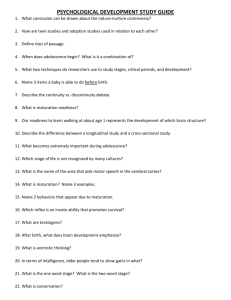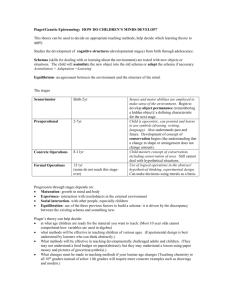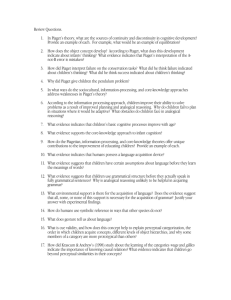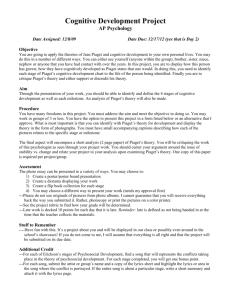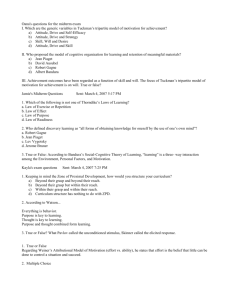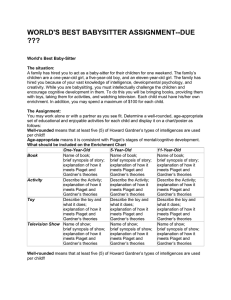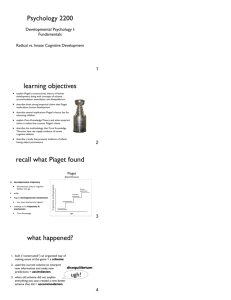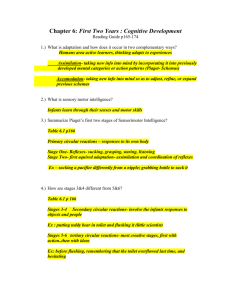Child Development Theory - Piaget vs. Gardner
advertisement
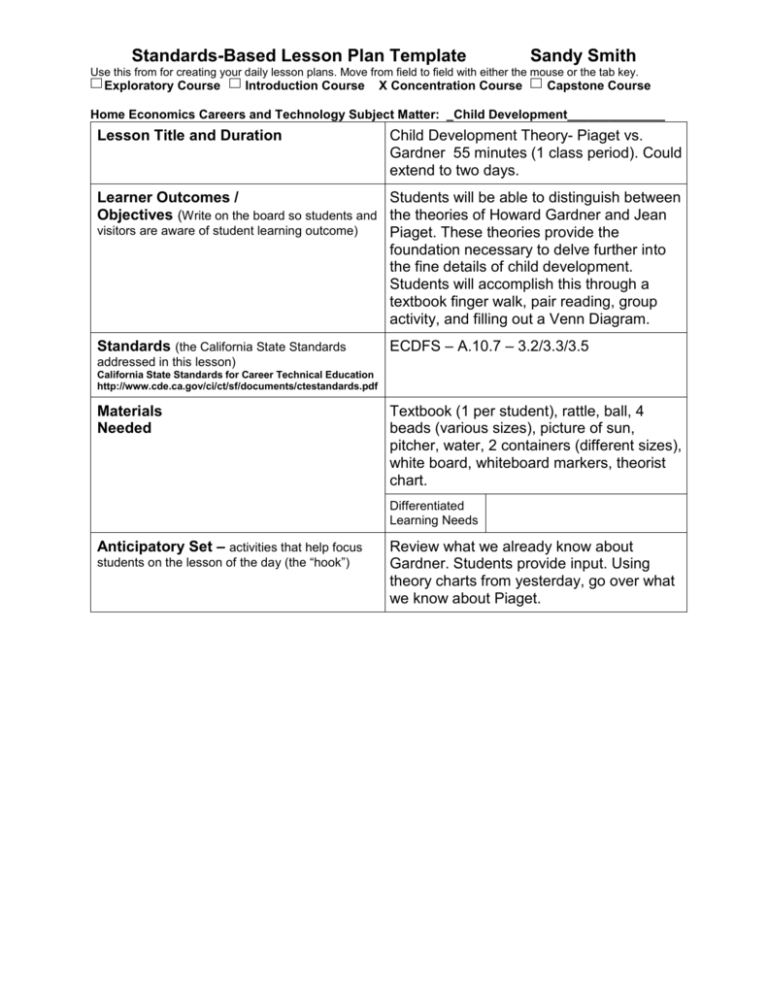
Standards-Based Lesson Plan Template Sandy Smith Use this from for creating your daily lesson plans. Move from field to field with either the mouse or the tab key. Exploratory Course Introduction Course X Concentration Course Capstone Course Home Economics Careers and Technology Subject Matter: _Child Development______________ Lesson Title and Duration Child Development Theory- Piaget vs. Gardner 55 minutes (1 class period). Could extend to two days. Learner Outcomes / Students will be able to distinguish between Objectives (Write on the board so students and the theories of Howard Gardner and Jean visitors are aware of student learning outcome) Piaget. These theories provide the foundation necessary to delve further into the fine details of child development. Students will accomplish this through a textbook finger walk, pair reading, group activity, and filling out a Venn Diagram. Standards (the California State Standards ECDFS – A.10.7 – 3.2/3.3/3.5 addressed in this lesson) California State Standards for Career Technical Education http://www.cde.ca.gov/ci/ct/sf/documents/ctestandards.pdf Materials Needed Textbook (1 per student), rattle, ball, 4 beads (various sizes), picture of sun, pitcher, water, 2 containers (different sizes), white board, whiteboard markers, theorist chart. Differentiated Learning Needs Anticipatory Set – activities that help focus students on the lesson of the day (the “hook”) Review what we already know about Gardner. Students provide input. Using theory charts from yesterday, go over what we know about Piaget. Teaching the Lesson Students turn to page 352. In pairs, have students finger-walk through the section. Modeling – how will you demonstrate Emphasize the importance of looking at the skill or competency? bold headings, highlighted words, pictures, Italics, etc. Encourage them to take notes Instructional Strategies – how will you on key points they found important. Give deliver the lesson? about 20 minutes. Check for Understanding – how will you ensure the skill or competency is understood by the students? Come back together as a whole class and have groups share what they found. Go over Piaget’s four stages through PowerPoint. Be sure to highlight the terms: object permanence, multiple classification, seriation, conservation, and egocentric. Place students in four groups. Each group is a stage: sensorimotor, preoperational, concrete operations, and formal operations. Each group is responsible for acting out two key concepts given to them on a note card from that stage. Class tries to guess the action and the stage. Give a few minutes for each group to plan their skit. Group 1: Sensorimotor- You have a rattle and a ball to use. Act out object permanence and intentional behavior. Group 2: Preoperational- You have beads and a picture of a sun. Act out seriation and egocentric. Group 3- Concrete Operational- You have a pitcher of water, two containers, and a container of clay. Act out conservation and reversibility. Group 4- Formal Operations- Create a brainstorming web on the board that maps out the steps needed to become a teacher. Think out loud as you write so class gets the hint. Direct students to look at their theory chart. They should be able to fill in the rest of the blanks for Piaget. Differentiated Learning Needs Guided Practice / Monitoring – an activity directly supervised by the instructor that allows students to demonstrate grasp of new learning. Instructor moves around the room determining the level of mastery and providing individual remediation as needed. Turn to a partner and share what you filled in for both Piaget and Gardner. Using the info from your theory charts and what you read, compare Piaget and Gardner on a Venn Diagram. Differentiated Learning Needs Closure – Statements or actions made by the instructor that help students make sense out of what has just been taught, to help form a coherent picture, to eliminate confusion and frustration, and to reinforce major points to be learned. Children go through the same stages as they grow and develop, but not necessarily at the same time. Independent Take a poll from other students in your Practice – a question or problem for students to other 5 classes. Which multiple intelligence ponder on their own or in small groups or pairs. best describes how they learn best? Make The aim is to reinforce and extend the learning final results into a pie chart to be shared beyond the lesson and ideally into real world tomorrow. settings. This may be a homework assignment. Next day- bring all results together as a class and tally results. Differentiated Learning Needs Summarize, Evaluate & Reflect – after teaching the lesson, ask students to reflect on their learning. Instructors can also reflect on the lesson, its success, and how it can be improved. Why is it important to know about Gardener and Piaget when it comes to working around children?
